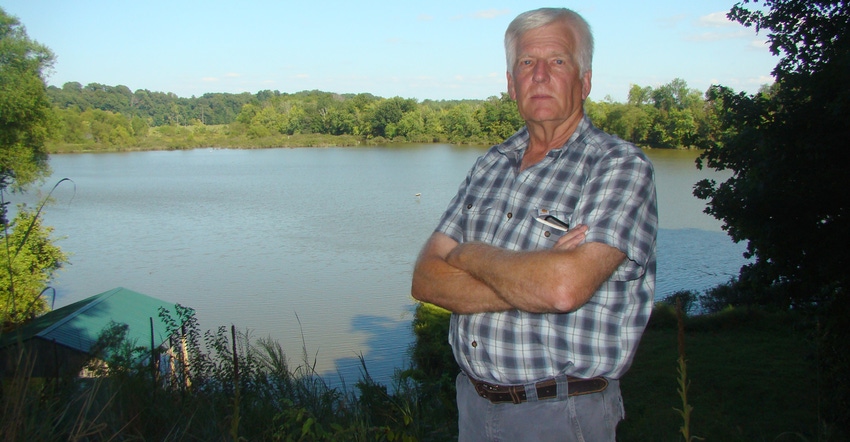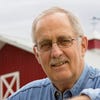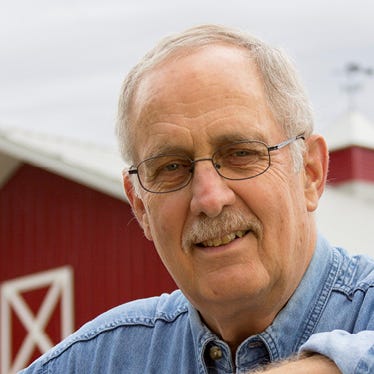February 25, 2022

One way of looking at solar farms is that they’re just another crop. Think about it — farmers grow corn and soybeans by capturing the sun’s rays with plant leaves. Solar panels are like giant leaves that capture sunlight and turn it into electrical energy.
One knock on large-scale solar farms is that they eat up huge chunks of prime farmland. But one conservation-minded Indiana farmer says it doesn’t have to be a case of either/or. Rather, solar farms could give farmers an opportunity to harvest two crops simultaneously.
Related: Researchers explore dual-use options for solar
“There are a number of ways to better utilize that land than just to produce electricity,” says Ray McCormick, Vincennes. “There’s an opportunity for farmers to produce more than one crop and create multiple sources of income.”
Currently, there is much research and discussion about creating dual-use options, also known as “agrivoltaics,” a combination of “agriculture” and “photovoltaics.” McCormick formed a working group of stakeholders — including solar developers, electric companies, universities and seed companies — to explore ways to make dual-use options happen.
Possibilities being explored or implemented for using land among solar panels include growing produce, haying, growing cover crops or pollinator habitat, and grazing sheep or goats. McCormick knows sheep breeders in Wyoming who could supply sheep for grazing, and there are current efforts to develop breeds compatible with dual-use options.
Roundstone Seed in Kentucky is developing seed blends that will include forage for sheep, as well as pollinator habitat that is not palatable for sheep, leaving that part to attract pollinators.
Why dual-use?
McCormick says there are other good reasons to pursue dual-use possibilities.
“Many solar companies are open to working with farmers, because their No. 1 cost of operating a solar farm is dealing with the vegetative growth under the panels,” he says. “So, it makes sense for them to look for ways to eliminate that cost. It also gives farmers a chance to do some really good things to build up their soil, make it like virgin prairie, and increase carbon and organic matter.
“There are also a lot of farmers who have a large percentage of rented ground in their portfolio and depend heavily on that. Some of them have been farming that ground for decades and have become like family. This would give those farmers a chance to continue renting that ground while being part of the solution.”

But in Indiana, farmers are very adept at growing corn and soybeans. Is shifting to grazing sheep really a viable option?
“There is a market there,” McCormick says. “Some 43% of mutton consumed in the U.S. is imported, and that market will continue to grow as the ethnic population increases. Switching to sheep beats losing a thousand-acre farm, and farmers are very good at adapting to promising new opportunities.”
Agrivoltaics: A win-win?
Tim Hayes, environmental director for Duke Energy Sustainable Solutions, says there are a couple of good reasons why solar development or power companies could be as interested as farmers in exploring agrivoltaics.
“Large-scale solar projects got their start in the Southwest deserts, where there’s plenty of sunshine and very little vegetation,” he says. “But here, it’s a different story. With the soils, climate and rain we have here, controlling the vegetation is going to be a challenge and a major expense. We are looking for other options besides continually mowing those sites.”
Hayes says Duke is also hearing from stakeholders about the significant loss of productive farmland. “It’s true,” he says. “In the Midwest, the best land available for solar development is agricultural land. It’s flat, no need to clear trees, no wetlands or endangered species habitat issues.
“But that comes at the cost of potentially removing huge amounts of land from agricultural use. If there are ways that we can keep it in some kind of agricultural production, that would be good for both farmers and electric companies.”
Currently, Duke is looking at options such as grazing sheep, or growing specialty crops or produce. These practices could fit under solar panels and be reasonably shade-tolerant. But Hayes says Duke engineers are also looking at possible ways to modify the design of solar farms to make them more compatible with Midwest agriculture. The challenge is making design changes that allow for optimization of both energy and agricultural production.
“In three or four more years, I think you’re going to see a lot more development on this subject,” he says.
Boone writes from Wabash, Ind.
Read more about:
SolarAbout the Author(s)
You May Also Like






